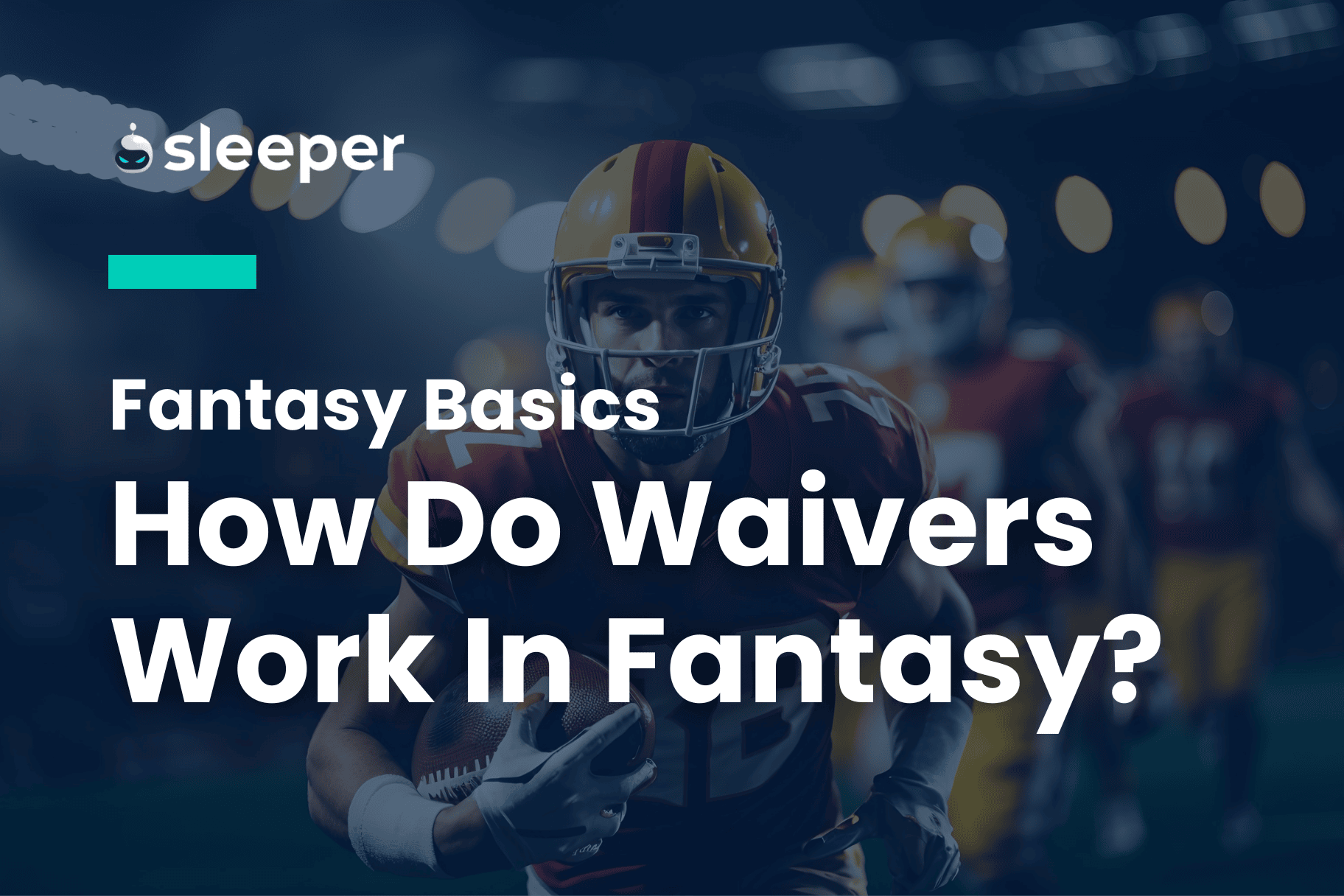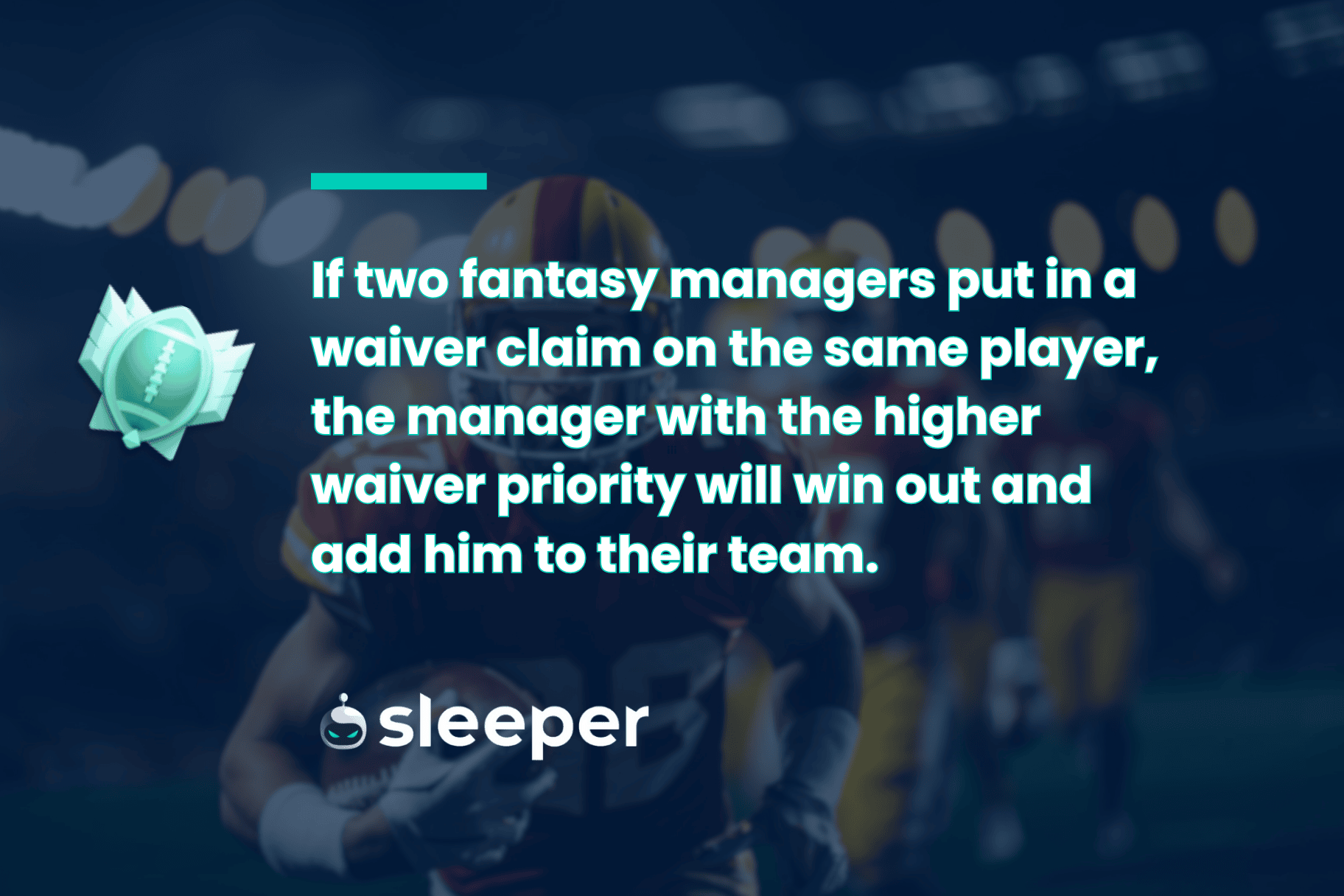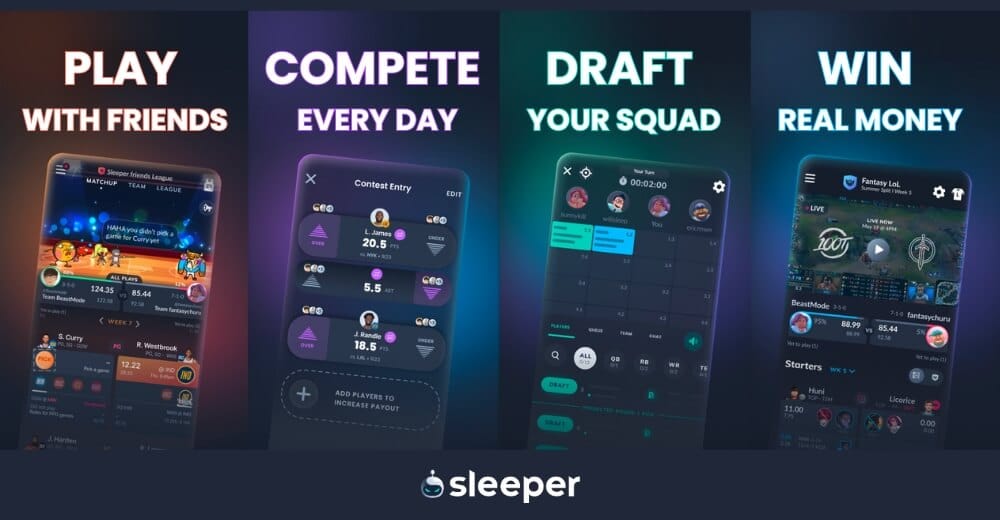Learn what the waiver wire system is, how it works, the different types and how waiver order is determined. Plus, get expert tips to master the wire en route to a league-winning team.

Understanding the waiver wire is a crucial part of finding success in season-long fantasy football leagues. So read on, as we’ll outline the different types of waiver wires, along with key strategy tips for each of them.
What is the Waiver Wire?
The waiver wire ensures that fantasy managers have similar access to all the unrostered players in a fantasy football league.
With waivers, we can react to injuries and shifts in player usage that occur after the draft.
In simple terms, think of the waiver wire as a holding area for surprise players.
In 2023, Puka Nacua had surprisingly awesome usage for a fifth-round rookie, totaling 105 receptions and 1,486 receiving yards.
Zamir White surprised managers with more than 23 touches per game over the final four weeks of last season, due to a Josh Jacobs injury. Perhaps you thought Jacobs had a relatively high chance to get injured at some point in the season, but nobody truly knew he would miss the final four weeks after staying healthy until then.
How Do Waivers Work in Fantasy Football?
Access to the waiver wire usually begins on Tuesday nights during the NFL season, after all the Sunday games and the Monday night game have been played. Most weeks, there will be injuries or playing-time changes that affect your fantasy roster or your opponents’ rosters. These injuries or changes will cause new players to gain fantasy value.
To acquire an available player who gained fantasy value from the past week’s NFL games, you’ll need to submit a waiver claim. Generally, those waiver claims will process on Tuesday night, and a successfully claimed player will move from the waiver wire, or free agent pool, to your fantasy football roster on Wednesday morning. In return, you’ll likely need to drop a player from your fantasy roster to the waiver wire.
Ex. A fantasy manager no longer wanted Running Back XYZ on their fantasy roster after he suffered a multi-week injury. So, the manager submitted a waiver claim on Running Back ABC, and when it was successful, Running Back ABC joined their team, while Running Back XYZ then became a free agent.
Waiver Order or Priority

Waiver order is initially determined by flipping the fantasy football draft order. So, in a 12-team league, the person who picked 12th gets first waiver priority, the person who picked 11th gets second waiver priority, etc. As weeks pass and waiver claims are made, the fantasy managers who have waited the longest to make a claim keep moving up in priority.
For example, if the first priority waiver team successfully claims a player, then they would drop down to 12th in priority for the next week, with the second priority team taking the top priority spot until they need to make a claim.
Waiver order is really just a way to avoid ties. If two fantasy managers put in a waiver claim on the same player, the manager with the higher waiver priority will win out and add him to their team.
Three Types of Waiver Wires
Rolling or Continuous Waivers
Also known as standard waivers, rolling waivers are the default on most fantasy football platforms. The above section on waiver order is used throughout the season, where managers drop to the bottom of the waiver priority every time they successfully make a waiver claim.
Take 2023 for example. Suppose the fantasy managers with the second and third waiver priority both put a waiver claim in on Nacua after his massive Week 1 performance. The manager with the second priority would win Nacua, drop a player from their roster and then fall to 12th in priority. The manager with third priority would not claim Nacua and would not drop any players. Rather, this manager — and all others with a lower priority than second — would then move up a slot in the waiver order.
FAAB Waivers
FAAB stands for Free Agent Acquisition Budget, and each manager has a set budget (usually $100) to spend on free agent players throughout the season. Instead of just submitting a waiver claim for a player, with FAAB waivers, you’ll need to specify how much of your budget you’re willing to spend.
No other managers in your league will know what your bids are and vice versa. Let’s stick with the Nacua example. After his huge Week 1 performance, you could have bid $71 of your $100 budget for the season. If two other managers had bids at $78 and $31, the manager who bid $78 would add Nacua to their roster, and their budget for the remainder of the season would fall from $100 down to $22.
Waiver priority matters much less with FAAB waivers, since priority only affects FAAB waivers if you and another manager happen to place the exact same bid on the exact same player.
Note: FAAB waivers are generally recommended for more advanced fantasy enthusiasts with multiple seasons under their belt.
Reverse Standings
Usually reserved for leagues filled with novice players, here the waiver order resets each week in reverse standings order. So, the last-place team would have highest priority, while the first-place team would have last waiver priority. Whether or not you successfully claim a player that week will have no effect on the next week’s priority order.
Waiver Options on Sleeper
Sleeper is the fastest-growing fantasy football platform, with millions of monthly users during the football season.
All three waiver wire types are supported on Sleeper, and hardcore fantasy commissioners can customize each option in-depth.
With Sleeper, each individual fantasy league is in control of waiver wire factors like which day of the week players are claimed and how long dropped players must sit on waivers before they can be picked up by another team.

Tips to Master Waiver Wires
Be Aware of Injuries
After games end each week, make sure to check on injury updates. Not every injury actually results in missed games, so it’s important to read the expected recovery timeline for each player.
If a starting running back tears his ACL in Week 3, his backup will be the most popular waiver add for the week, since the backup has a chance to start games for the rest of the season. However, a minor injury with a two- or three-week recovery should be treated differently than a season-ending injury.
If you’re in a FAAB waivers league, the ACL scenario above may result in bidding $85 of your $100 budget on the team’s backup running back. However, a two-week injury probably doesn’t require a FAAB bid of more than $15-$20.
If you’re in a league with rolling waivers and have the highest priority, the first scenario is definitely the time to cash in and use your first priority. The two-week injury scenario is probably the wrong time to use your top-rank waiver priority. There is no exact science to any of it, but most in-season articles will give FAAB and/or waiver wire priority advice for their top adds of the week.
Understand Where Fantasy Breakouts Come From
At running back, fantasy breakouts often are a result of an injury to the starter or other uncertainty in the depth chart.
Running back rooms without a clear top option are more likely to produce top waiver wire adds in-season. In these situations, a backup running back may simply outplay the starter and force a change in the distribution of touches.
With wide receivers, rookies or other young players generally increase their roles as the season moves along. Minnesota star Justin Jefferson is a great example of this from his 2020 rookie season. Through two games, Jefferson totaled just five catches for 70 yards, which is under five fantasy points per game in half-PPR scoring. There were many impatient fantasy managers who prematurely gave up on him. Over the next 14 games, Jefferson’s role grew, and he averaged six catches, 95 receiving yards and 16 fantasy points per game.
Rookie wide receivers taken in Rounds 1 or 2 of the NFL Draft should generally be held for at least three to four weeks — if not longer — before being dropped to waivers.
As for tight ends, look for those surrounded by weak receiving talent, where they have the potential to become the first or second receiving option on their team. Elite scoring offenses are the other place to search for fantasy tight ends on the waiver wire. Tight ends are bigger-bodied than receivers, and they often see a large portion of their fantasy production come from red zone touchdowns.
Not all Bye Weeks are Created Equally
Looking at the 2024 NFL season, six teams have a Week 12 bye, while only two are on bye in Week 9. There is going to be more waiver wire competition during Week 12 than Week 9, since more fantasy managers will be on the lookout to replace starters.
Cater the Waiver Wire Type to Your League
If you’re the commissioner of a league filled with beginners, we recommend reverse standings or rolling waivers. When your league is looking for a challenge after a couple fantasy seasons, switch over to the FAAB waiver systems.
Frequently Asked Questions
Who gets the first waiver priority?
Initially, the team with the last pick in the fantasy football draft will begin the fantasy season with the highest waiver priority.
How long is a player on waivers after being dropped in fantasy football?
This can be customized on a platform like Sleeper, but it’s most common for players to sit on the waiver wire for at least two days after being dropped.
Can you pick up a player you dropped in fantasy?
Mistakes happen in fantasy football, and even the most experienced fantasy football enthusiasts can recount a time or two when they dropped a player and regretted their decision the next day.
So yes, you can make a waiver claim on a player you’ve just dropped. But there are no guarantees you’ll have the highest waiver priority or highest FAAB bid.
What is the best waiver wire type for beginners?
Reverse standings order is the best waiver wire type for beginners, since it gives an advantage to the struggling teams. As league buy-in fees increase or the league gets more seasoned and competitive, consider trying one of the other waiver wire types.
Sleeper is free to play and allows total customization for the waiver wire, among many other features.
Time to Get Wired
You’re now fully informed on what the waiver wire is, the different waiver types and a few strategy tips for treating the free agent player pool like a certified fantasy football pro.
Now it’s time to join some fantasy football leagues. Join Sleeper today, either by signing up online or downloading the app. There, you can see all the different ways to customize your waiver wire experience in less than a minute.
Many fantasy football managers also play DFS (daily fantasy sports), where you simply select more or less for players’ stat projections. Sleeper Picks is a great place for fantasy football DFS, and you’ll find more than half a dozen sports offered throughout the year.




